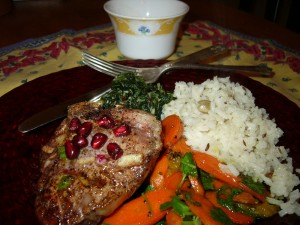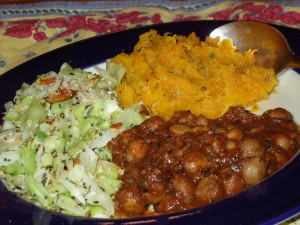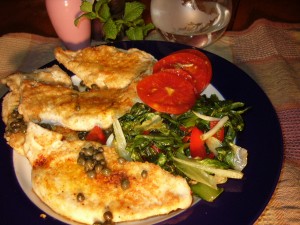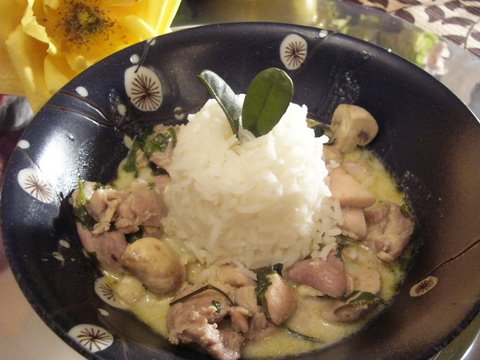Indian Inner Peace
Note: this is part 3 in a 4 part series – search tag “seasonings” to see all posts.
Indian cuisine features a rich blend of spices. I could spend an hour just closing my eyes and savoring the scent of each of them. Cumin, turmeric, coriander, cinnamon, ginger, all so hypnotic!
Each is renowned in it’s own right for benefits ranging from digestive support (ginger) to anti-inflammatory properties (turmeric). So aside from being a delight to the senses, it is a very healthy way to eat.
One of the key techniques is to fry the spices first before adding food ingredients. This deepens the flavor incredibly. Ghee, or clarified butter, is the cooking medium of choice due to it’s light flavor and ability to withstand high heat. Vegetable oil is on OK substitute if necessary.
Here is the guide that follows the same format as the other posts in the series:
Indian Inner Peace
OILS: Ghee Vegetable Oil Butter
SOUR: Lemon or Lime Juice
SAVORY: Ginger Jalapeno Garlic Chili Powder
HERBS & SPICES:
Cilantro Mint Cumin Coriander Garam Masala Nutmeg Cinnamon
Turmeric Black Mustard Seed Cumin Seed Fennel Seed
SWEETNERS: Maple Syrup Brown Sugar Cardamom
EXTRAS: Raisins Shredded Coconut
NUTS: Almonds Cashews Filberts
DAIRY: Yogurt Cottage Cheese Crème Fraiche
VEGETABLES: Eggplant Spinach Cauliflower Carrots Tomato Onion Potato
Butternut Squash Cabbage Lentils Chick Peas Cucumber
GRAINS: Basmati Rice
Here are some examples. Remember, cooking is one part recipe & 4 parts inspiration. Let the spirit flow through you and into the food you are preparing.
~ Heat Ghee or Oil in a non-stick skillet and add some Cumin Seed, Mustard Seeds, and Brown Sugar to the pan. When the sugar has caramelized, add minced Jalapeno Pepper, and Garam Masala. Cook Briefly and then add steamed Spinach (be sure to drain it thoroughly). Add Shredded Coconut and Blanched Almonds and mix together well. Serve with a sprinkle of Nutmeg and squirt of Fresh Lemon.
~ Combine Lentils, water, Ground Coriander and sliced Fresh Ginger in a small saucepan and bring to a boil. Cover and reduce heat and cook until lentils are tender (20 minutes for red or up to 45 for brown). Serve over steamed Basmati Rice.
~ Mash a freshly baked Butternut Squash into a puree (or use frozen winter squash, completely thawed). Season with Turmeric, Cayenne, Nutmeg, Ginger, and Orange Juice. Heat Oil or Ghee in a non-stick Skillet, add some Brown Sugar and cook until it turns reddish brown. Toss in some seeded and chopped Fresh Tomatoes and cook until shiny. Mix in the seasoned Puree and heat thoroughly.
Namaste~
MGH Tags: cleanse, skin
 Mediterranean Diet Recipes
Mediterranean Diet Recipes
 Categories:
Categories:  Tags:
Tags: 


Recent Comments